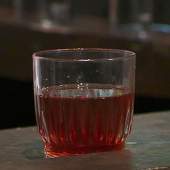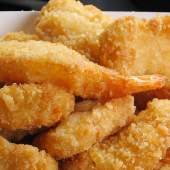Watermelon

“When one has tasted watermelon, he knows what the angels eat.”
— Mark Twain
“See that watermelon hangin' on the vine;
I wish that watermelon could be mine.”
— Tennessee Ernie Ford
Today, August 3, we celebrate National Watermelon Day, so it’s the perfect time to take a closer look at this summer mainstay — a healthy, refreshing treat that belongs to the Cucubitaceae family (good luck pronouncing that!). As you enjoy it by the slice at your next picnic or backyard barbecue, here are some watermelon facts to keep in mind:
- Melons have been in existence for upwards of 5,000 years, and it is thought that they originated in the Middle East and North Africa. If the art of the era is any indication, they were almost certainly cultivated by the ancient Egyptians, who are sometimes depicted holding melons in their hieroglyphics, and were often entombed with them (King Tut is a case in point). Even back then, melons were also associated with fertility (see below).
- Melons made it to Europe sometime during the Bronze Age, and have been grown in America since at least the time of the Pilgrims.
- There are as many as 300 different varieties of melons grown in the U.S. and Central America, but only about 50 kinds are readily attainable in the marketplace. One of the rarest, perhaps, is the delectably sweet Bradford melon from the American South, which has an amazing history all its own.
- Watermelons are by far the most popular melon with Americans, who rate them above cantaloupe, honeydew, muskmelons, and other varieties.
- Watermelons are unusual in that every part of them is edible. This quality makes them both a fruit and a vegetable, a quality they share with pumpkins, squash, and cucumbers. Don’t throw away the seeds — they contain zinc, protein, iron, and fiber. The rind is a good source of chlorophyll, which is a natural anti-inflammatory and (believe it or not) deodorant. If you are not comfortable eating it by itself, throw it in a blender with a little lime juice. You can even make watermelon rind pickles!
- Not getting enough hydration? Watermelons can help — they are more than 90 percent water, and have far fewer calories than juice or soda.
- Watermelons also contain vitamins A, B6, and C; magnesium, potassium, and the antioxidant Lycopene, which may prevent several types of cancer, strokes, heart attacks, and high blood pressure; the amino acid I-citrulline, which promotes heart health, helps to prevent muscle soreness, and can boost the immune system; and (listen up, men!) L-arginine, which is an aid to circulation and could help with erectile dysfunction. (There’s a reason why watermelons are sometimes called “Nature’s Viagra.”)
Want to know how to determine if a watermelon is ripe and at its peak flavor? Lift the melon and look at the rind on the bottom — there should be a pale yellow spot where it rested as it ripened (if the spot is green or white, the melon isn’t ready yet). Also, the melon should feel heavy, and make a deep bass sound when you knock on it.
Once you slice your watermelon, be sure to keep it refrigerated until ready to eat. And speaking of eating — how else can you enjoy watermelon, if you want to be creative? One way is to add it to beverages — especially alcoholic ones like margaritas, mojitos, piña coladas, daiquiris, and sangrias — and it’s wonderful in lemonade and milkshakes, too. Watermelon is also a terrific addition to green salads, and a great flavor in ice cream or sorbet. In short, just about anything you can imagine on a summer buffet table goes perfectly with watermelon.
So, the next hot, sunny day when you bite into that cool, wet, refreshing watermelon slice and its sticky pink juice dribbles down your arm or gets all over your face, revel in the fact that this is a completely guilt-free treat. And how rare is that?





